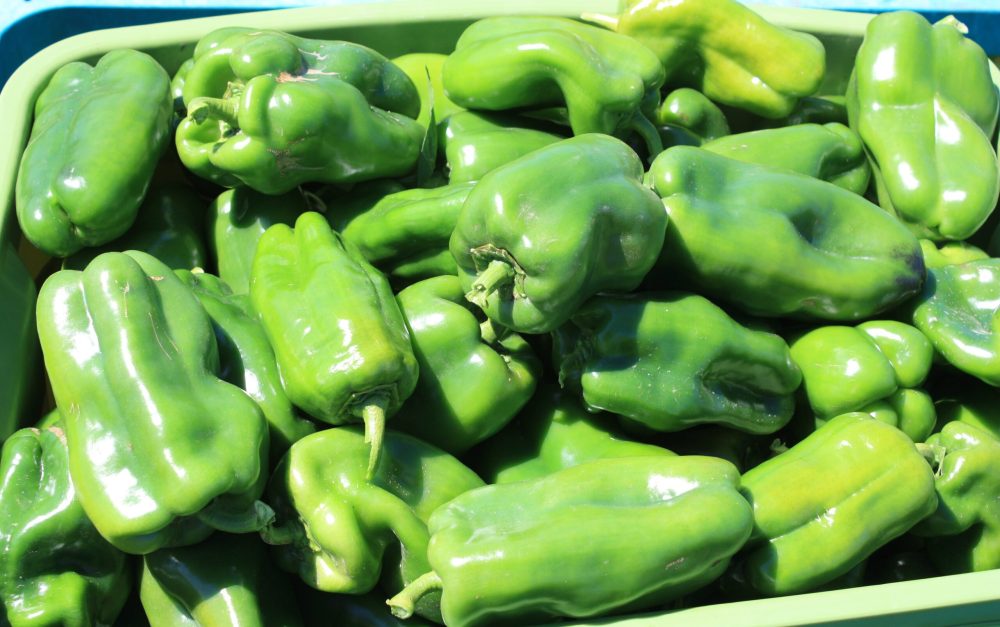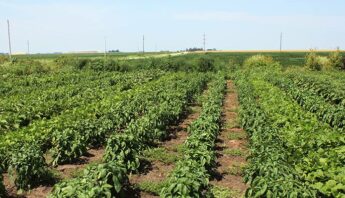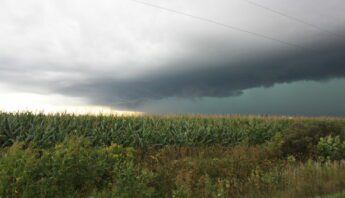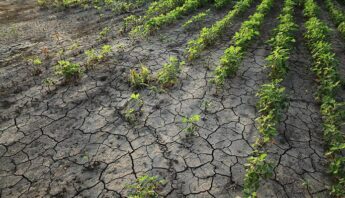I am approaching the 4th anniversary of my first day at work with Pesticide Action Network and I was more than a little excited to hear that I could celebrate the end of over-the-top dicamba use on soybeans and cotton. If you don’t understand why I am anxious to celebrate, then perhaps you do not know that one of the reasons I sought an off-farm job was this herbicide’s tendency to become a vapor and drift after application. Our small-scale, diversified farm has suffered regular damage to crops every year due to this problem since 2017, making it difficult for me to rely on the farm for my income.
But, my celebration is going to have to wait. While the February 6 court decision directed that the use of dicamba be halted for over-the-top applications on soybeans and cotton, the EPA is allowing the use of existing stock of dicamba under the old use-label guidelines for the 2024 growing season.
The problem with dicamba? Volatilization.
The biggest issue with dicamba products is that they volatilize (become a vapor) after application and then drift to fields that are not populated with dicamba tolerant crops. A farmer could apply a dicamba product, following best practices to avoid immediate drift, and still be guilty of applying a chemical that can move off-target two, three and even four days after spraying.
The science has been clear for a long time. The factors that increase the likelihood of dicamba drift include higher temperatures, lower relative humidity, no rainfall in the subsequent days after application and increased evaporation surfaces provided by the leaves of the target crops. Over-the-top (OTT) applications of dicamba on soybeans and cotton check many of the boxes that increase the likelihood of dicamba drift. These formulations are applied directly to plant surfaces at a time when weather conditions are also favorable for these products to drift.
To fully understand the problem, we have to recognize the relationship between dicamba herbicides and the genetically modified seeds that are used in combination with them. These crops have been modified to be resistant to dicamba, so a farm can apply the herbicide without damaging the target crop while still killing the weeds in that crop. But, most of the surrounding plants, including the crops on other farms, are subject to the damage this growth-regulator can cause because they do not have the genetic trait that provides protection.
What does dicamba do to non-target crops?
The pesticide registration allowing the OTT use of dicamba on soybeans and cotton was first implemented in 2016. Many soybean farmers in Iowa, and throughout the Upper Midwest, rapidly began to purchase and use the GE seeds and the associated dicamba herbicide. And that’s when things started to change on our own, small-scale, diversified farm.
A typical season’s yield for bell pepper production on our farm between 2012 to 2015 was 750 to 850 pounds of marketable fruit (an average of 3000 peppers). Contrast this to our field production for bell peppers in 2017 (30 pounds), 2018 (5 pounds) and 2019 (51 pounds). And, to be perfectly clear, our standards for counting a fruit as marketable decreased greatly during those three seasons. Field peppers showed the classic symptoms of growth inhibitor damage each year, typically beginning in the second half of June to early July, when OTT applications of dicamba to soybean crops would be occurring in our area.
A wide range of our crops and some of our trees and bushes frequently exhibit well-known dicamba damage symptoms. The plants with the least damage typically show cupping of the leaves. Crops that were more susceptible, like our peppers, show even more damage. Some look a lot like someone pulled a drawstring in the center of the leaf, resulting in puckered and stunted growth. The main growth points of the plant are often twisted in on themselves, plants drop their flowers and fruit before they reach maturity.
Our response has been to reduce our pepper production and squeeze that crop into our limited high tunnel space (hoop houses). The covered environment seems to protect these plants from volatilization drift and we can still get some quality peppers — just not at the same scale we had before 2016. But there’s a bigger problem we are battling — peppers are not the only crop showing damage. And we can’t cover everything.
The best solution is to stop OTT dicamba use
The effects of dicamba on our farm were significant enough that I was willing to expend a significant amount of time writing a declaration a few years ago for the court case that was just decided. I wanted to share a small part of what I wrote then here:
As a professional farmer, I recognize that I must do my due diligence to mitigate factors that might threaten the production of my crops. In addition to working with buffer strips, moving sensitive crops to covered growing conditions, and taking areas prone to more pesticide drift out of production, I have implemented several other strategies. I have altered our crop rotations, changed planting schedules, used floating row covers, and planted flowering companion crops near sensitive crop rows. With the increased uncertainty brought about by dicamba, I have not been able to find an economically feasible strategy to address the problem.
The important takeaway is this: Our farm worked very hard to find a solution where we could still grow quality food crops despite the use of dicamba in our area. But, the responsibility for making adjustments due to the trespass of chemicals applied elsewhere should never have been ours in the first place. And, if there was no way to remove the possibility of volatilization and drift with dicamba, it should never have been approved for OTT use in the first place.
So, do we celebrate the dicamba court case?
It can be so tempting to see this as an all or nothing scenario. But, in reality, it is not. The EPA’s action to allow the use of existing product stock after its registration has changed is not a new approach and it should not be a surprise to anyone who pays attention to pesticide regulation. I certainly do not have to like it — and I don’t — but I do like the fact that the EPA is proceeding with the removal of the registration for OTT uses on soybeans and cotton. This is simply a step towards a goal I have been hoping to see the US reach since I first started worrying about dicamba in 2017.
With this decision, soybean growers who do not want to be forced to grow a dicamba-ready soybean just in case a neighbor sprays dicamba, can now use the seeds that fit their farm. Orchardists can remove this hazard (after this season) from their lists of worries as their crops bloom in the spring. And maybe, next year, I can grow my bell peppers in the field again.








